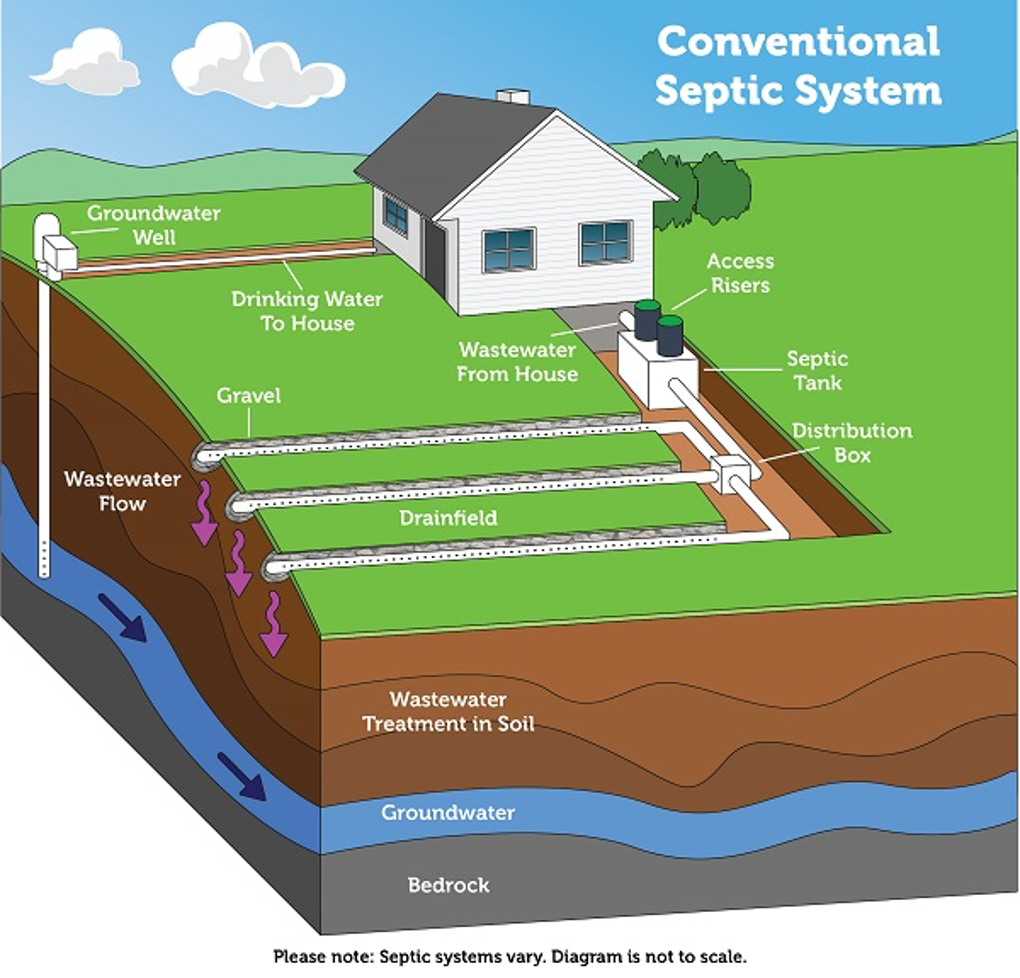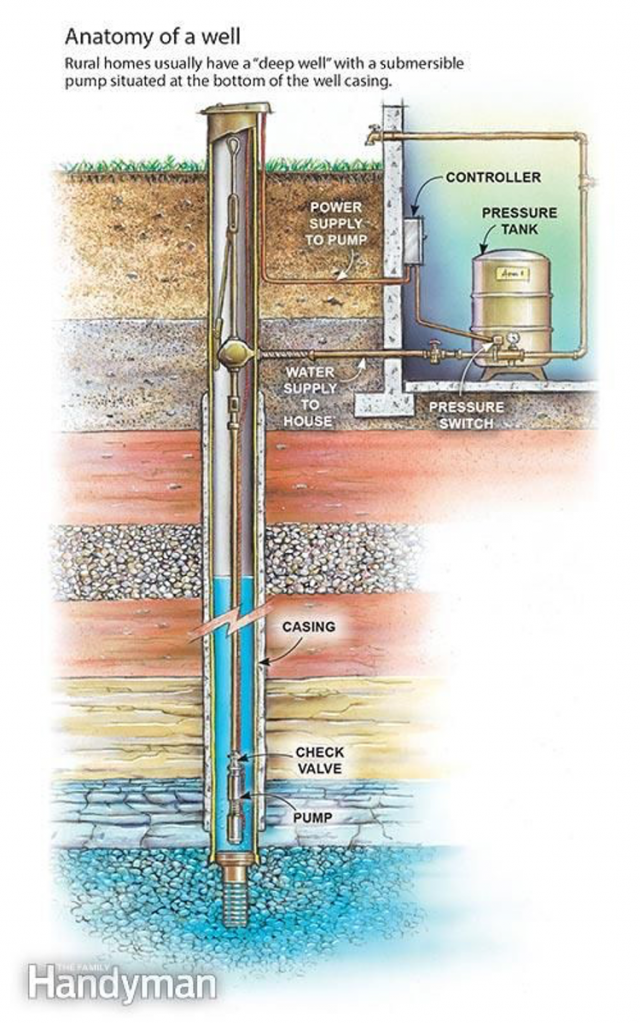September 19th – 23rd is SepticSmart Week! When my husband and I bought our home in Vienna in 2001, we had never previously considered that we would ever own a home with a septic system. We were a bit apprehensive but took the plunge and have never looked back. To some, the idea of purchasing a home with a well or septic system can seem overwhelming, but many attractive DC area homes have one or the other, and sometimes both! While Washington DC itself is one hundred percent public water and sewer, wells and septic systems are far more common than you would think in the greater DC suburbs.

Source: Environmental Protection Agency
What is a septic system? A septic system is a way to dispose of household wastes on an individual level. Over the course of the life of a septic system (about 40 years) the cost can often be far less than paying a monthly or quarterly sewage bill. Replacing a gravity system costs approximately $10K while an alternative system can cost up to $85K to replace. If you take certain precautions, you will have few to no issues with your septic system. Here are some quick septic reminders:
1) Every home’s pumping schedule is different. Usually, a septic tank will need to be pumped once every three to five years. However, pumping frequency depends on a variety of factors including tank size, usage, and age of the system. The county will usually send you a reminder when it’s due.
2) You can’t flush everything. Flushing items that are not biodegradable will lead to big problems in your septic system. This includes dental floss, feminine products, pet waste, as well as baby wipes. These items can interfere with your system’s ability to break down waste.
3) Your system involves more than toilets. Every sink, tub, and pipe in your house will drain into your septic system, including your kitchen sink! Unlike homes on a sewer, food items should not go down the sink. Composting food waste is a great way to help your septic system, and your garden! Other items that should not go down the drain include oils, grease, chemicals, paint, and medications.
4) Proper maintenance extends its lifespan. Just like any other appliance in your home, your septic system will break down eventually. However, by sticking to a routine pumping and maintenance schedule, you can extend the lifespan of your system. Make sure to maintain plants and vegetation near the system to ensure roots do not block the drains. Keep cars and heavy vehicles parked away from the drain field and tank. Prevent system freezing during cold weather by inspecting and insulating vulnerable system parts.

Source: Circle of Blue
I clearly remember drinking a glass of well water from the tap for the first time at the home of a good friend. It tasted amazing! Pure, clean groundwater not contaminated or chlorinated. 1/5th of Virginia’s population depends on wells, approximately 1.6 million Virginians. Since Virginia is a buyer-beware state, there are no requirements on the seller’s end to disclose any known problems or defects. Laws concerning wells have only been in place since 1990, so if the house you are looking to purchase was built before then, you might consider having a Private Well and/or Septic Addendum added to your contract.
Overall, the state of Maryland has 420,000 homes on septic and 13% of the population is on well water. Prince George’s county has the largest percentage of people on wells in the country! Laws and regulations in Maryland vary depending on the county of residence in terms of permitting and other requirements, but all of Maryland requires at least 10,000 square feet of property for the initial drainfield and three reserve drainfields for a typical single-family home. These backup fields are built and put into service only when the main drainfield fails.

Source: familyhandyman.com
As with anything home related, it’s important to take care of your well. Well maintenance is similar to having your annual physical at the doctor. It is recommended by the CDC and Well Owner that your well and well water be inspected annually. Water testing looks for harmful bacteria and hard substances like total coliform bacteria, nitrates, total dissolved solids, and pH levels. Any found defects can be treated or remediated by an expert.
When looking at homes with a septic system and well water, some things to keep in mind would be that the septic field and well head need to be at least 100 feet apart in order to prevent contamination in the drinking water. The well head itself needs to be at least 50 feet away from the corner of the house. Another good rule of thumb is that a home should have at least 2-3 acres of land in order to support a well and septic system and still have enough land for a new field or well should one or the other fail.
Now that you know a little more about wells and septic systems, in your next home search don’t automatically discount a home for this reason! A home with a well or septic system has a well or septic because they have land and with land comes beauty. A good Realtor can help answer your questions and advise you on the next best steps!

Jean Beatty is a licensed real estate agent in VA, MD, and DC with McEnearney Associates Realtors® in McLean, VA. If you would like more information on selling or buying in today’s complex market, contact Jean at 301-641-4149 or visit her website JeanBeatty.com.
Don’t miss a post! Get the latest local guides and neighborhood news straight to your inbox!

 Facebook
Facebook
 X
X
 Pinterest
Pinterest
 Copy Link
Copy Link






